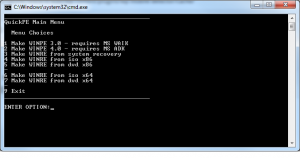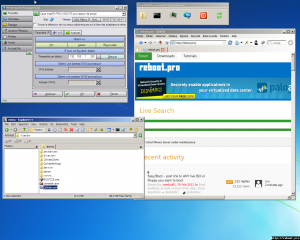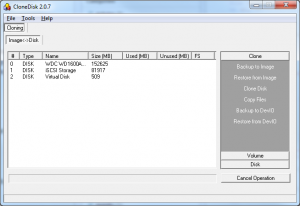Arduino : display a clock based on a lcd screen and a RTC
Arduino : output to a tv (tvout)
Arduino : use a PS2 keyboard
Arduino : send and receive data thru radio frequency (RF433)
Arduino : programming an Arduino Pro Mini with an USB TTL Dongle
Arduino : use an ethernet controller (enc28j60)
Arduino : use it as an infrared remote
Arduino : use a Texas CC1101
Arduino : use your internal atmel 328p temperature
Reading the atmel 328 spec, one can see that its ADC (analog digital converter) has an internal temperature sensor.
Note that this applies to the atmel 168 too.
Although not as accurate as a dedicated temperature sensor (like the DS18B20), it can be useful to keep track of the arduino temp for an few extra bytes.
Note that it will be probably be higher to your environemental temperature : you may have to adjust.
Also, note that it is depending on the voltage / arduino activity : you may have to adjust again.
Here attached how to read the internal temp (rename to ino or pde) : internal_temp
(this was taken from a thread on avrfreaks).
In 2 weeks times, I lost a disk twice in my synology DS210.
First time, the disk was truly giving signs of imminent death.
Because I was using SHR (synology hybrid raid), I could not mount my disk under my ubuntu.
So this is how I got my datas back (right before the disk died for good).
The disk is mounted thru a USB dock bay onto my synology.
-1: locate your disk and raid partition with fdisk -l,
you should get something like this :
/dev/sdx3 588 19457 151569760+ fd Linux raid autodetect
-2: ensure this partition actually contains an MD device with mdadm –examine –scan /dev/sdx3,
you should something like that :
ARRAY /dev/md3 level=raid1 num-devices=2 UUID=db7c8f07:6f0f4570:852c2e22:a378fec9
-3: locate your last active MD device with mdadm –detail –scan,
you should get something like :
ARRAY /dev/md1 metadata=0.90 UUID=f07f5754:cf6f8af4:663cbd89:1480ea74
ARRAY /dev/md2 metadata=1.1 name=ds201j:2 UUID=17f442a7:d767633b:a4fc4e5b:88db9d4b
-> you want to use next free MD device which is MD3.
-4: create a MD device pointing to your partition with mdadm -A –verbose –run /dev/md3 /dev/sdx3
-5 : now mount it with mount /dev/md3 /mnt/usb
You can now retrieve your files in /mnt/usb !!!
Now, like I told you at the beginning at this article, I lost 2 disk in a row in a week time.
The second time, the method above did not work 🙁
This time, UFS Explorer saved my datas.
Hope this can help others…
Another worthy tool to add to your toolset.
Disk2vhd is a utility that creates VHD (Virtual Hard Disk – Microsoft’s Virtual Machine disk format) versions of physical disks for use in Microsoft Virtual PC or Microsoft Hyper-V virtual machines (VMs). The difference between Disk2vhd and other physical-to-virtual tools is that you can run Disk2vhd on a system that’s online. Disk2vhd uses Windows’ Volume Snapshot capability, introduced in Windows XP, to create consistent point-in-time snapshots of the volumes you want to include in a conversion.
See here.
Yet another tool (batch) to generate a minimalist winpe iso using the Windows Assessment and Deployment Toolkit (ADK) or Windows Automated Installation Kit .
Uncompress to x:\quickpe and launch make.cmd.
Get winpe iso in x:\quickpe\%processor_architecture% .
Changelog:
- 0.2
- -make4.cmd will generate a winpe4.iso (using MS ADK)
- -make3.cmd will generate a winpe3.iso (using MS WAIK)
- 0.3
- -winre.cmd will generate a winre.iso (using local WINRE)
- 0.4
- -any files/folders in \pe_extra will be added in the wim file in the \tools folder
- -winre.cmd renamed to make_re.cmd to be consistent with make_pe3.cmd and mape_pe4.cmd
- -added setres to the zip file.
- 0.5
- -added make_re_from_iso.cmd which will generate a winpe iso based from a windows 7 or 8 iso.
- -added make_re_from_dvd.cmd which will generate a winpe iso based from a windows 7 or 8 dvd.
- -added a dpinst GUI so that one can easily load drivers from a driverspack.
- 0.6
- -added : compatibility with x64 hosts for winpe4
- 0.7
- -added : add-pack3.sample, add-pack4.sample (rename to cmd to add a winpe package in winpe3 or winpe4)
- -added : _run_me.cmd as a main menu
- 0.8
- -added : x64 tinyshell
- 0.9
- -modified : reviewed code so that it all works on x64 platforms
- -added : add-drivers3.sample, add-drivers4.sample (rename to cmd to add a windows drivers in winpe3 or winpe4)
Download/Discuss it here
The batch menu :
A generated Winpe :
New CloneDisk 2.0.7 version out.
Download it here.
Discuss it here.
Changelog since 2.0:
- modified : remove some screens/functions for simplicity and focus
- added : can backup/restore to/from a wim file (using MS WIMGAPI)
- added : can mount/unmount a wim file
- added : get information about an image within the .wim file
- fixed : support for drives > 2147483647 sectors, now up to 4294967295 sectors
- fixed : cleaned all pchar to pansichar to prepare a move to unicode (where pchar=pwidechar)
- removed : madsecurity, preparing for a 64bits version
- modified : use ms offlinereg for offline registry rather than mounting the hive (less intrusive on the target hive)
- modified : dropped getlogicaldrives api in favor or querydosdevice
- added : set symbolic link
- added : set volume point
- fixed : will properly catch message from wimgapi
- added : will check presence of wimgapi
- added : will exclude files listed in wimscript.ini when capturing to wim
- added : ability to backup and restore to/from devio (from Imdisk / Olof)
- modified : regorganised menus into clone, disk and volume categories


